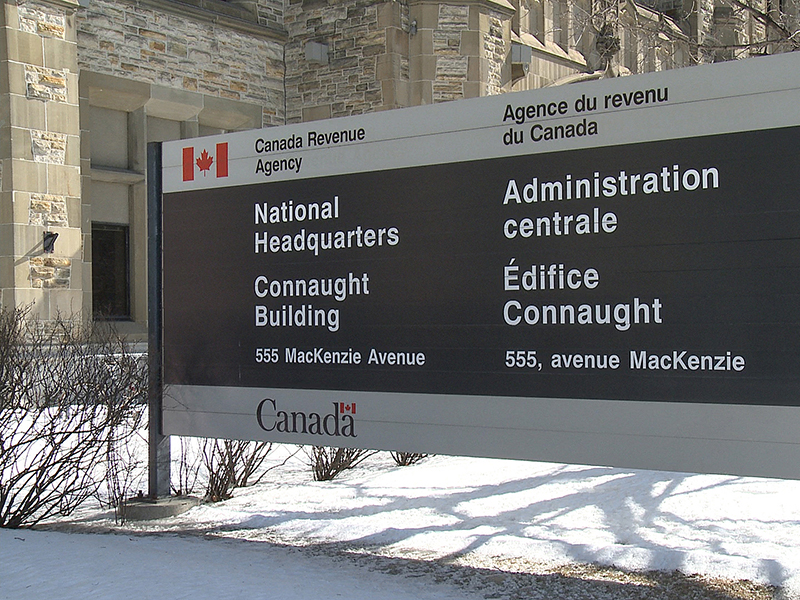
Financial advisors will need to step up their compliance efforts now that a dramatic expansion of the Canada Revenue Agency’s (CRA) mandatory disclosure rules is law.
After foreshadowing a future crackdown on aggressive tax planning in the 2021 budget, the federal government released plans for a sweeping update to the Income Tax Act’s mandatory disclosure regime in February 2022 that would significantly lower the threshold for an “avoidance transaction” to be reported to the CRA.
“It’s a pretty massive change that will increase the volume of avoidance transactions that have to be disclosed exponentially,” said Matias Milet, partner in the tax practice group with Osler Hoskin & Harcourt LLP.
Following a round of public consultations that resulted in largely cosmetic revisions, the regime’s amendments appeared in Bill C-47, which implements legislation from the 2023 budget. The ensuing legislative review did not yield any further significant changes, Milet said.
“Advisors and promoters are going to have to beef up their compliance and dedicate significant IT and human resources to put in place processes to triage transactions, identify them and then do the reporting,” he said.
The regime now applies to transactions closed on and after June 22, the date C-47 received royal assent. C-47 — now the Budget Implementation Act, 2023, No. 1 — also doubles the length of the reporting period to 90 days from the day a deal closes, up from the original 45 days.
Prior to June 22, avoidance transactions — those whose primary purpose is a tax benefit — only needed to be reported to the CRA when two of the following three hallmarks are present:
- advisors or promoters are engaged on a contingent fee arrangement
- advisors or promoters receive confidentiality protection regarding the transaction
- contractual protection is provided to the taxpayer or other parties in the event a tax benefit is challenged or ultimately fails to materialize
Under the new regime, a tax benefit needs only be one of the main purposes of the transaction, with just one of the hallmarks present for it to be reportable. In addition, the reporting obligation falls on every advisor or promoter involved in a reportable transaction or series of transactions to make their own separate disclosure to the CRA, rather than relying on a single report from the taxpayer.
The act also created a new category of “notifiable transactions,” requiring reporting by advisors and promoters involved in transactions identical or substantially similar to ones the CRA has previously identified as potentially abusive.
The notifiable list is expected to grow. For now, the government has highlighted six transaction types, which include the manipulation of Canadian-controlled private corporation status to avoid anti-deferral rules applying to investment income, loss-straddle transactions created using a partnership, and avoidance of the 21-year deemed disposition for trust property.
In response to concerns of overreach expressed by several advocacy groups, the C-47 version of the rules includes carve-outs to narrow the scope of reportable transactions.
For example, there are explicit exclusions for contingent fees related to the Scientific Research and Experimental Development tax credit program and contractual protections related to the sale of a business, such as representations and warranties regarding tax owing and potential reassessments — as long as they can be reasonably linked to the purchase price. Still, Milet wishes the federal government had gone further.
“There’s more clarity, but what is covered by the contractual protection hallmark is still quite broad,” he said. “You get similar indemnities and warranties in standard commercial transactions outside of the mergers and acquisitions context, so it’s puzzling why they would limit the carve-out in that way.”
Parliamentarians also ignored lobbying from CPA Canada and the Canadian Bar Association, which each recommended that the rules include a “materiality” test to reduce the burden on taxpayers and the CRA by excluding minor transactions where only a small tax benefit was obtained.
Penalties for non-compliance with the mandatory disclosure rules could be up to $110,000 plus the value of all fees charged.
Tara Benham, national leader of Grant Thornton’s Canadian tax practice, said the updated rules will make taxpayers and their advisors think twice about engaging in potentially abusive tax planning. But she’s not sure it will be worth the price.
“The compliance burden that is being added or layered on for taxpayers and their advisors is significant. And if you flip that around, the CRA is going to be in receipt of all that information, so there is a burden on both sides of that coin,” Benham said.
She takes little solace from the act’s explanatory notes, in which the Department of Finance promised further administrative guidance in the coming years as part of its effort to ensure that normal non-abusive commercial transactions are not held up by the new disclosure requirements.
“Administrative relief is always a little uncomfortable, because it’s not law and it doesn’t give any certainty,” Benham added.
In the meantime, she said financial advisors should educate themselves on the hallmarks of reportable transactions, noting that her firm has already begun reviewing its standard engagement letters to limit potential liability under the new rules.
“Communication with the client and their other advisors is key, because their activities might pull you into the net,” Benham said.
Notifiable transactions could pose problems for financial advisors because of remaining uncertainty over how and when the CRA will communicate new additions to its list, she added.
“As tax advisors, we’re watching all the time for updates from the CRA, but I’m not sure financial advisors are going to be checking the CRA website for new notifiable transactions every time the undertake some work for a client,” Benham explained.